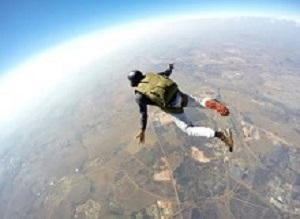 A significant number of patients participated in thrill-seeking activities even after hypertrophic cardiomyopathy (HCM) diagnosis and while these activities are often associated with mild symptoms, they rarely lead to significant events.
A significant number of patients participated in thrill-seeking activities even after hypertrophic cardiomyopathy (HCM) diagnosis and while these activities are often associated with mild symptoms, they rarely lead to significant events.
Adults with an inherited thickening of the heart muscle, often don’t stop participating in thrill-seeking activities despite recommendations that they should. And while some experienced minor consequences, only a few suffered serious health effects as a result, according to preliminary research from an online survey to be presented in Chicago at the American Heart Association’s Scientific Sessions 2018, a premier global exchange of the latest advances in cardiovascular science for researchers and clinicians.
Hypertrophic cardiomyopathy, characterized by enlarged heart walls, is one of the most common cause of sudden cardiac death in young people. Doctors often recommend that people with the condition don’t participate in activities like roller coaster riding, jet skiing and more because stimulation to the heart might be too dangerous.
A Yale study examined the safety of thrill-seeking activities among adults diagnosed with hypertrophic cardiomyopathy. Researchers examined anonymous online survey responses from 633 adults (average age 51) who were at high-risk for irregular heartbeats (arrhythmias). Some had implantable defibrillators and 24.4% reported daily symptoms.
Respondents were asked about their participation in roller coaster riding, jet skiing, rafting, bungee jumping, rappelling, paragliding, kayaking/canoeing, motor racing, snowboarding, BASE jumping (including parachuting or wingsuit flying from a cliff) and skydiving, as well as symptoms that occurred because of the thrill-seeking activities.
Researchers found: 331 respondents said they continued to engage in thrill-seeking activities after being diagnosed with hypertrophic cardiomyopathy; responders engaged in nearly 8,000 total thrill-seeking activities; and nearly 190 people, or about a third, experienced minor symptoms, such as nausea, dizziness, chest pain or palpitations.
Nine people reported significant events during or within 60 minutes of participating in a thrill-seeking event, such as passing out or requiring therapy to shock the heart. In four of those cases, the events occurred during roller coaster riding.
“Caregiver advice on activity restrictions is important for hypertrophic cardiomyopathy patients, especially younger ones, who wish to enjoy a lifestyle as close to their peers as safely possible,” said Dr Nikolaos Papoutsidakis, study author and associate research scientist at Yale University School of Medicine in New Haven, Connecticut. “These results may aid discussions between physicians and patients regarding the safety of participation in thrill-seeking activities.”
Abstract
Introduction: Hypertrophic Cardiomyopathy (HCM) is the most common inherited cardiomyopathy and an important cause of sudden cardiac death in young. Previous work suggests that adrenergic stimulation during thrill-seeking activities may be dangerous for cardiac patients. Based on this and the Bethesda guidelines many physicians advise against participation.
Hypothesis: We hypothesized that many patients would continue to participate in these activities and we sought to examine their characteristics and outcomes.
Methods: Patient advocacy organizations (HCMA), social media outlets and collaborating centers invited HCM patients to complete an anonymous online survey, providing information about participation in thrill-seeking activities (Rollercoaster riding, Jet skiing, Rafting, Bungee jumping, Rappelling, Paragliding, Kayaking/canoeing, Motor racing, Snowboarding, BASE jumping, Skydiving) and associated symptoms.
Results: Out of 633 responders, (age: 51.3+-14.4 years, 351 F, 272 M), 556 had engaged in thrill-seeking activity, with 331 continuing after HCM diagnosis. The cohort was high-risk for arrhythmias (24.4% daily symptoms, 45% post ICD, 13.8% post ICD shock, 31.4% history VT). Over a total of 7994 participations, 187 subjects (33.6%) experienced minor events consisting of nausea, dizziness, chest pain or palpitations. Nine subjects (0.02%) reported significant events during or within 60 min of participation [8 syncopal events (4 during rollercoaster riding, 4 during other activities), 1 ICD shock (during skiing)] (Figure 1).
Conclusions: This is the first study to assess the safety of thrill-seeking activities for HCM patients. A significant number of patients participated in thrill-seeking activities even after HCM diagnosis. These activities are often associated with mild symptoms but rarely lead to significant events (syncope, ICD shock) in this high-risk population of HCM patients.
Authors
Nikolaos Papoutsidakis, Lisa Salberg, Jodie Ingles, Christopher Semsarian, Meghan Mannello, Iacopo Olivotto, Niccolo Maurizi, Cynthia Waldman, Stephen Heitner, Daniel Jacoby
[link url="http://newsroom.heart.org/news/some-heart-patients-ride-roller-coasters-and-other-thrill-seeking-activities-despite-warnings"]AHA material[/link]
[link url="https://www.ahajournals.org/doi/10.1161/circ.138.suppl_1.16784"]Circulation abstract[/link]
